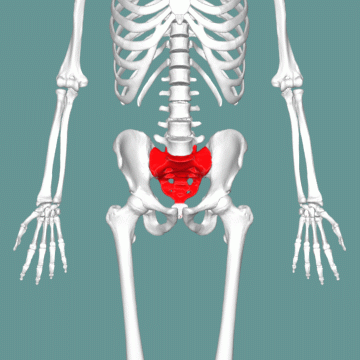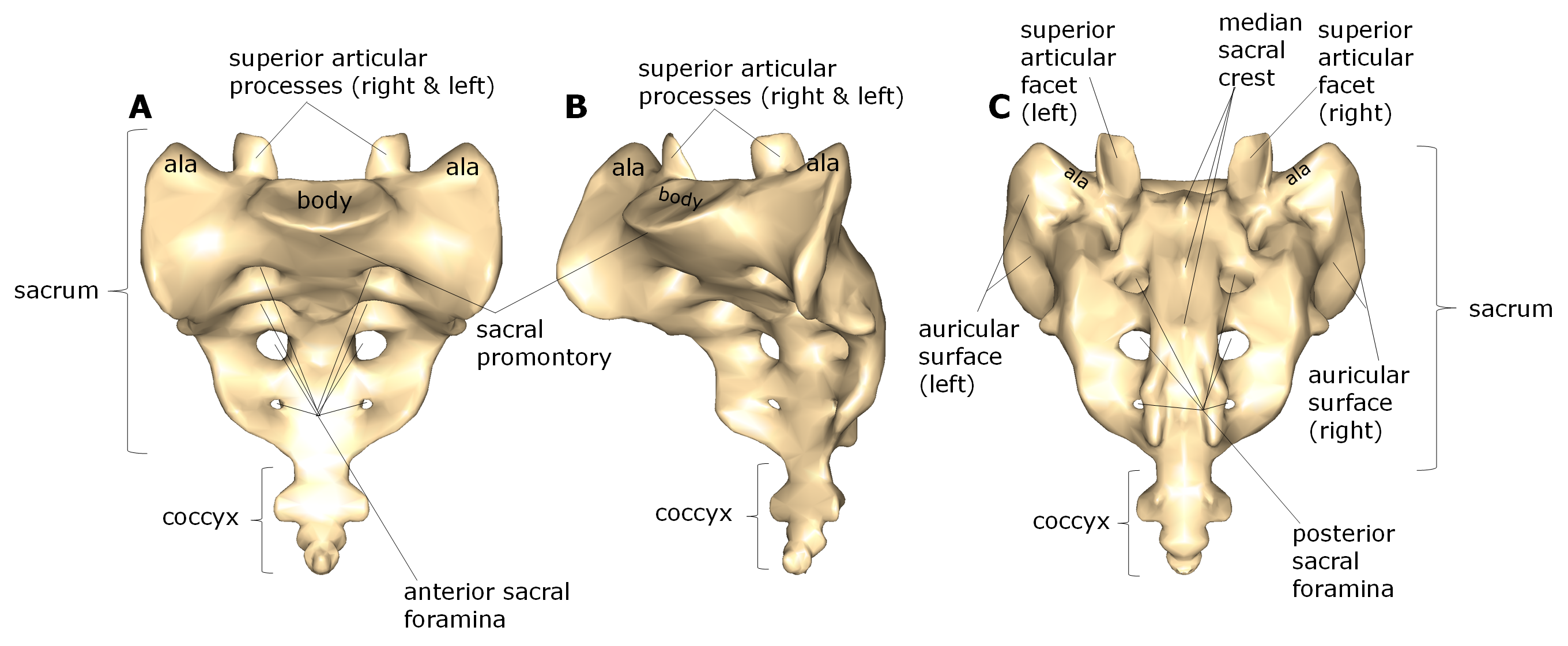8.5.6: Sacrum and Coccyx
- Page ID
- 53929
Sacrum and Coccyx

Above: The position of the sacrum is shown in red.
The sacrum is part of both the vertebral column and the pelvic girdle. The sacrum articulates with the intervertebral disc under the L5 vertebra above it with its superior articular processes and facets and body of the first sacral vertebra. The sacrum also articulates with two coxal bones (hip bones) lateral to it at the auricular surfaces. The sacrum starts out as five vertebrae that fuse to form the one structure. This fusion is not complete until somewhere between the 18th and 30th year.

Above: The sacrum and coccyx from (A) anterior, (B) anterolateral, and (C) posterior views.
The coccyx is a vestigial tailbone. It is the evolutionary remnant of an ancestral species to humans that did have tails. It no longer serves as a functional tail, but some muscles, tendons, and ligaments do attach to it, making it useful. It forms from the fusion of usually three vertebrae, but a small proportion of the population have four or even five vertebrae in their coccyx.
Attributions (All Vertebral Column Sections)
- "Anatomy 204L: Laboratory Manual (Second Edition)" by Ethan Snow, University of North Dakota is licensed under CC BY-NC 4.0
- "Anatomy and Physiology" by J. Gordon Betts et al., OpenStax is licensed under CC BY 4.0
- "BIOL 250 Human Anatomy Lab Manual SU 19" by Yancy Aquino, Skyline College is licensed under CC BY-NC-SA 4.0
- "BodyParts3D/Anatomography" by The Database Center for Life Science is licensed under CC BY-SA 2.1
- "Cervical vertebra english.png" by user:debivort is licensed under CC BY-SA 3.0
- "Sacrum - animation02.gif" by BodyParts3D is made by DBCLS is licensed under CC BY-SA 2.1


